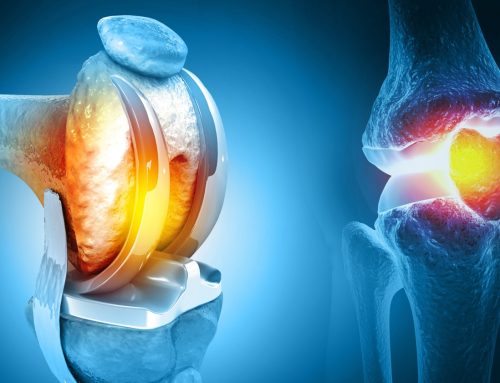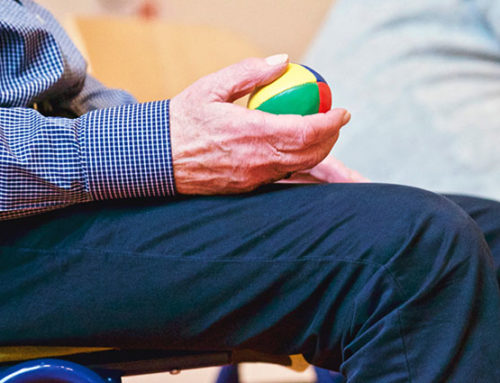There are many different types of therapists to assist with different ailments, whether it be mental health or physical health. Occupational therapists are a type of therapist that can be very beneficial, even life-changing, for those who have undergone serious injuries or illnesses. Whatever the challenge, occupational therapists aim to assist everyone in order to achieve a better quality of life and become active in their daily functions once more. While occupational therapy is widely used, there are still many misconceptions about this type of therapy. Here, our experts debunk occupational therapy myths and shed light on the facts.
Myth #1: Occupational therapy will help me find a job.
While their title contains the word “occupation”, an occupational therapist’s goal is not necessarily to help you get a job. Rather, it relates to daily chores and activities that everyone needs or wishes to partake in. These tasks include eating, dressing, driving and more. It can also refer to things that people do within a work setting, such as writing, sitting for an extended period or typing. An occupational therapist has the purpose of helping the individual achieve their personal goals and ultimately helping them live the lifestyle that they want.
Myth #2: Occupational therapy isn’t nearly as important as physical therapy.
Both types of therapy are equally important, especially for those who have undergone major surgery or experienced an injury. For instance, if an individual has experienced an illness that takes away their ability to function normally, an occupational therapist will help the person relearn how to eat, get dressed, walk and complete other vital everyday tasks that many may take for granted.
Myth #3: Occupational therapy is for old people.
Another occupational therapy myth is that these therapists only work with the elderly population. The truth is, OTs work with people of all ages. Many patients are children, such as babies in the NICU, toddlers and school-aged children as well as college-aged young adults. These individuals will receive help from an occupational therapist in order to achieve their best life.
Myth #4: Occupational therapists and physical therapists are the same.
The focus of these therapists is different in the sense that occupational therapists focus on what the patient needs to accomplish while physical therapists focus on increasing the person’s strength and ability to move fluidly. In the case that a patient experiences a major medical problem, such as a stroke, it is the occupational therapist’s job to help the patient re-learn how to dress and feed themself as well as other daily functions. The occupational therapist will also recommend any necessary equipment needed to help the person in their learning process. A physical therapist, however, helps the person restore his movement, balance and coordination.
Myth #5. Occupational therapists only work on hands and/or arms.
Occupational therapists work with more than just your hands. Whatever body parts are involved in daily activities and occupations will be involved in the rehabilitation process. This usually includes the entire body, such as the arms, legs, feet and overall cognition.
A Certified Hand Therapist (CHT) is an occupational therapist or physical therapist who, through advanced study and expertise, specializes in treating patients with conditions affecting the hands and upper extremity. Cary Ortho has two CHTs on our staff.
Myth #6: Occupational therapy is monotonous.
It is a common misconception that occupational therapists only help with autistic children or helping individuals in the bathroom. However, this is another one of the occupational therapy myths. OTs assist with many different medical needs in multiple settings. They utilize a wide variety of different interventions to help patients return to their normal lives. Occupational therapists also provide patients with exercises they can perform on their own at home. Both in-office and at-home exercises will change as the patient progresses and gains back function.
Myth #7: Occupational therapists only work at hospitals.
In some cases, occupational therapists do work in hospitals to help individuals regain function. However, hospitals are not the only place they work. In fact, these therapists can work in orthopaedic clinics, schools, in patients’ homes, community centers and other settings. A good occupational therapist analyzes how a patient fits in with their own environment. If that patient is experiencing limitations in what they can do there, the occupational therapist helps determine the reasoning behind the individual’s limitations and puts together a treatment plan so the patient can overcome them.
Occupational therapy in Cary and Holly Springs
Occupational therapists, like physical therapists, are valuable assets in the healthcare industry. They are an incredible resource for those who are trying to adjust after a major medical event, or for those who have a disability or chronic illness. Ots are there to help patients regain a sense of a normal life.
The occupational therapy specialists at Cary Ortho help patients learn new ways to move and regain strength, so they can return to work, school and everyday life. Occupational therapy is part of the Cary Orthopaedics physical therapy department now serving patients in Cary and Holly Springs. Contact us to make an appointment today.






